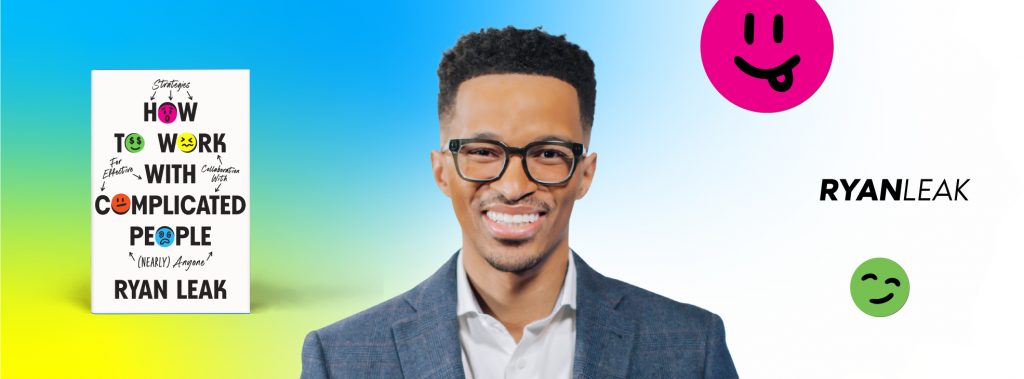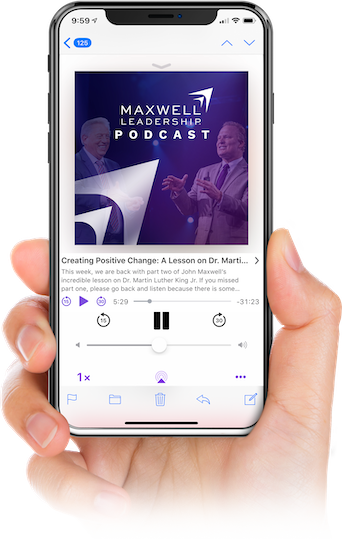4 Approaches for Working with Complicated People

In his new data-driven book How to Work with Complicated People, speaker and bestselling author Ryan Leak shares powerful collaboration strategies so that you can work effectively with nearly anyone. This blog post has been adapted from chapter 1. You can pre-order your copy here.
Think about all the people who cycle through your workday: clients, customers, coworkers, bosses, employees, executives, independent contractors, partners, shareholders, members of the media, competitors, consultants, auditors, board members, donors, inspectors—the list is almost infinite.
If you work with people in any capacity—which includes pretty much anyone with a job—some of those people are not going to be easy to figure out. They have issues. They have quirks. They have dark sides and downsides.
In every workplace, while you’re trying to navigate change, pursue audacious goals, and manage your work-life balance, there lurks a more daunting challenge: dealing with complicated people.
You know the types. The overbearing boss who can’t decide if they’re a micromanager or an absentee leader. The colleague whose mood swings could give the stock market a run for its money. The client whose demands rival those of a diva on a world tour.
Welcome to the wild, wild world of working with complicated people—a journey as unpredictable as it is unavoidable.
When it Comes to Complicated People, You’ve Got Options
So, what are you going to do about it?
While there are countless strategies you might employ to deal with complicated people, these strategies can be divided into four general categories:
OPTION 1: AVOID THEM.
What is the easiest way to deal with a difficult situation? Pretend it doesn’t exist and hope it goes away. When faced with someone who baffles you, you might think: If I avoid them, maybe they’ll leave me alone. If I ignore them, I won’t have to deal with them. Problem solved.
I get it. Ignoring or avoiding someone might provide short-term relief. Plus, by choosing not to engage, you might even believe you’re keeping the peace or preserving your energy.
The problem is that life doesn’t really work that way. Avoiding or ignoring issues doesn’t actually solve them. Most of us are stuck with these complicated coworkers, bosses, or employees anyway, so we can’t ignore them even if we want to. They’re in the next office over, or they are our direct report, or they just got promoted to office manager.
Avoiding problematic people might be a temporary fix, but it isn’t a viable long-term solution.
OPTION 2: CHANGE THEM.
This is often our go-to strategy. When we have creative brainstorming meetings with ourselves to plan how we’re going to deal with a complicated person, our brightest idea is usually to get them to change and think more like us. Then, in subtle ways, we pull, push, and prod them toward our preferences. There is a word for that, and it’s a word no one wants to describe the way they work: manipulation.
Trying to change someone is an option, but I don’t necessarily think it’s a smart one. You’ve probably been on the other end of being pulled, pushed, and prodded in a direction you didn’t want to go, and I’d be willing to bet it didn’t feel good. The arm-twisting strategy rarely works because nobody likes having their arm twisted.
Plus, it’s really not possible to change people from the outside. It’s hard enough to change yourself, and you’re on board with your own ideas. It’s pretty much impossible to talk someone else into changing something they don’t want to change.
Genuine change is a personal journey, and no one likes to be coerced or manipulated or gaslit into it. So, while changing them is technically an option, I don’t think that movie ends with them wanting to work with you.
OPTION 3: CANCEL THEM.
I was working with a leader one day, and I asked him about a previous employee I considered to be a mutual friend of ours. He said, “Them? Oh, they’re dead to me.”
His response surprised me. Dead? Really? What did they do to merit the cerebral and emotional funeral you gave them?
In an age of digital interactions and fleeting relationships, “canceling” someone has become as casual and common as declining a Facebook event invitation. It essentially means writing off anyone who doesn’t agree with you or whose opinion doesn’t align with your worldview. This could mean cutting ties, no longer being on speaking terms, ending the relationship altogether, or, even worse, advocating for their exclusion from groups or the company. It can easily move from you canceling them to you believing everyone else should join you.
While there are certain situations in which setting boundaries or cutting ties is necessary for your well-being, using cancellation as a primary strategy is limiting, to say the least. Using disconnection as a default isolates you from a work community you could be collaborating with to make your job a better place to work. When you shut out people who have different ideas and beliefs, you halt your development, sabotage healthy dialogue, and perpetuate division.
Again, it’s an option—but it’s not a healthy one.
OPTION 4: UNDERSTAND THEM.
This isn’t the easy option. It is the growing option, though. Embrace the chaos, my friend. Consider the most complicated person you work with and look for a way to approach them, understand them, and connect with them. I know it may be hard, but you don’t seek out resources about how to do easy things. The ability to learn to do hard things is what separates elite people from normal people and great leaders from average ones.
Understanding people better is a learned skill, and that’s good news. Why? Because it means you can get better at it. You can grow in it. While it’s difficult to move toward someone you’d rather move away from, if you want to excel and be effective in your life and career, becoming competent at connecting with different kinds of people is one of the key skills that will help make that happen.
Choosing the option to understand complicated people allows you to initiate open dialogue, ask questions without judgment, and actively listen. It enables you to see the world through their eyes, and that makes your world bigger.
Think about a time you’ve been misunderstood. Can you remember what it felt like to be in that position? Maybe your boss didn’t appreciate your ideas on a project, your coworkers didn’t like how you did your job, or an employee who worked for you got mad about a decision you made. At that moment, what did you wish they would take the time to do? Listen to you. Understand you. Give you the benefit of the doubt. Untangle your “complicated” and see the world through your eyes.
You probably didn’t expect them to completely agree with you (although that would have been nice), but you at least wanted them to engage with you from a place of authenticity rather than dismiss you with a label or a laugh.
Let’s extend that grace to others. In a complicated world, the best thing we can do is try to understand each other.
On April 8th, join Ryan Leak for a free, one-time webinar to celebrate the launch of his new book, How to Work With Complicated People.
This virtual event will be a deep dive into the world of working effectively with nearly anyone (yes, even the coworker you’re thinking of right now). Register here to gain practical strategies for improving your connections – and ultimately, your results.
More Articles

Do I Believe The Best In Others?

BIG ANNOUNCEMENT!









Be the first to comment on "4 Approaches for Working with Complicated People"